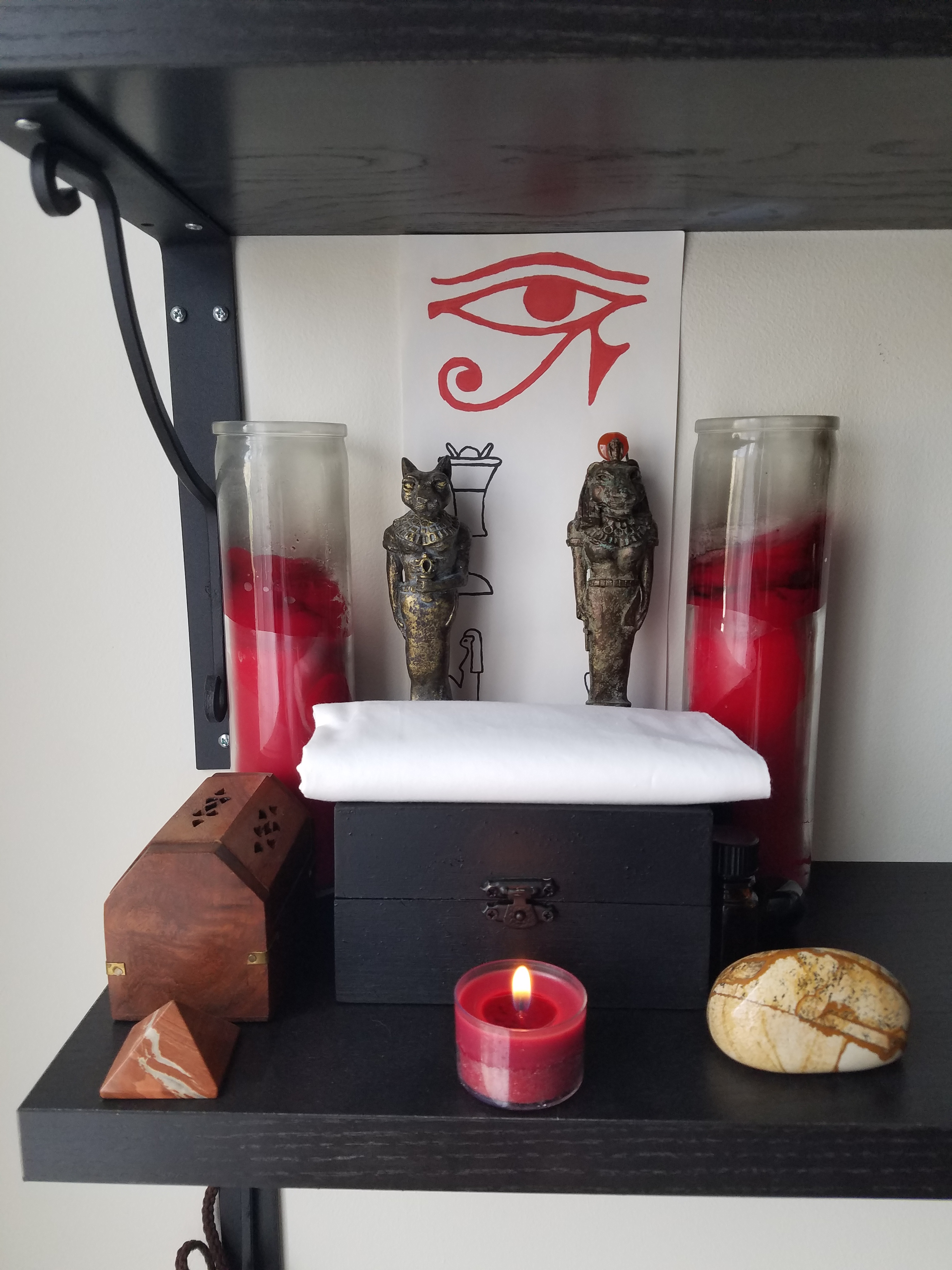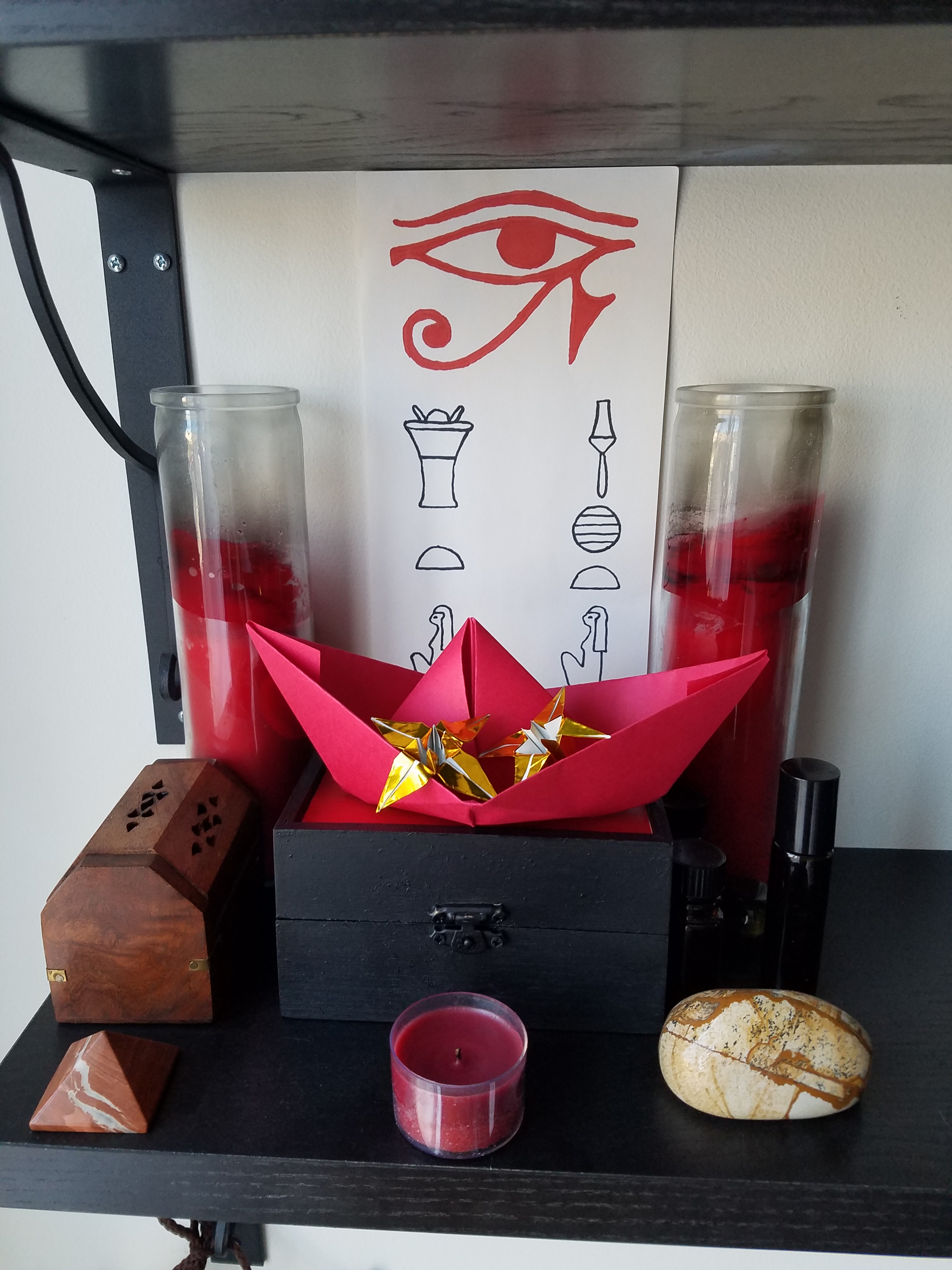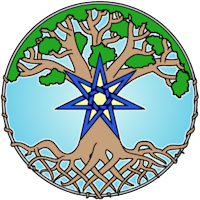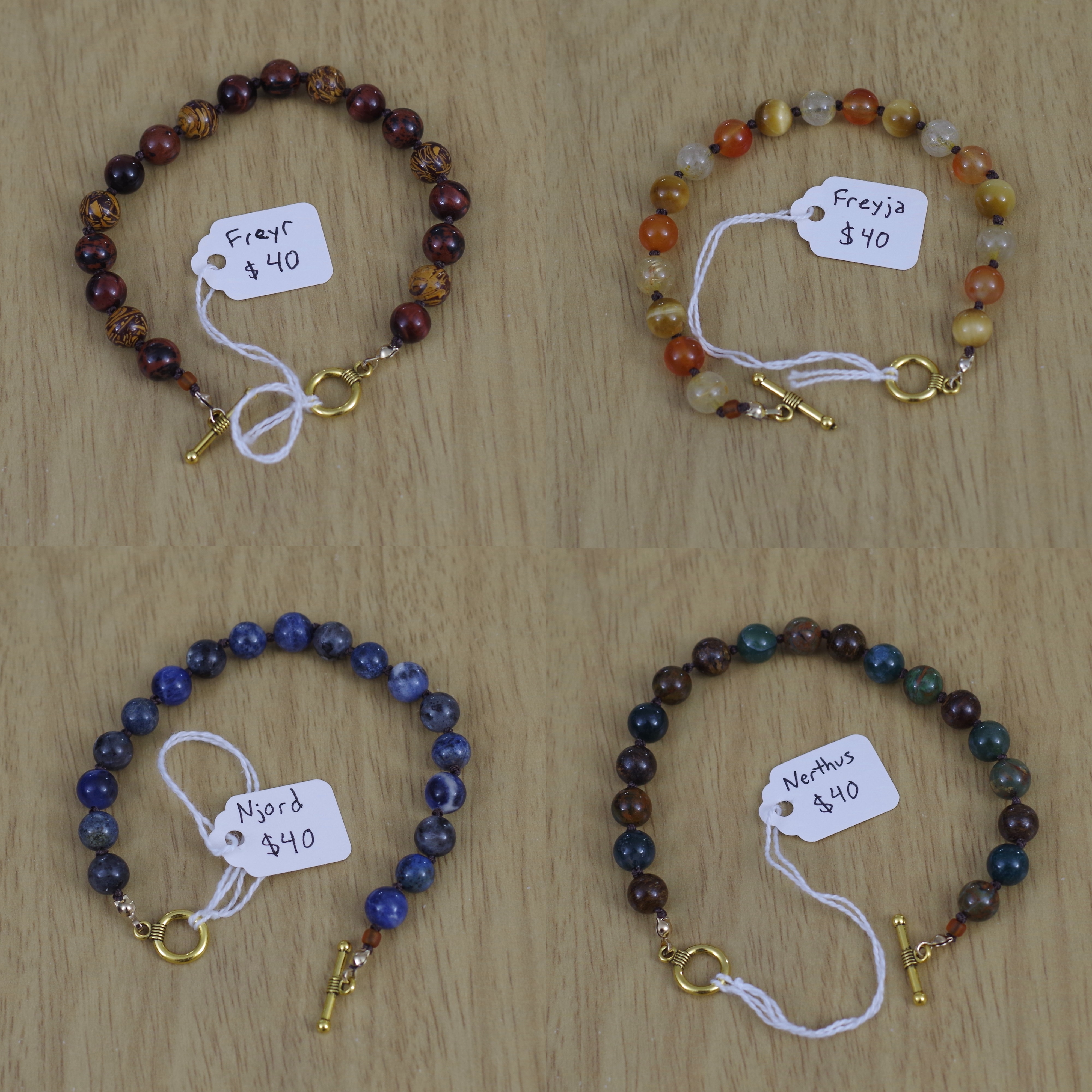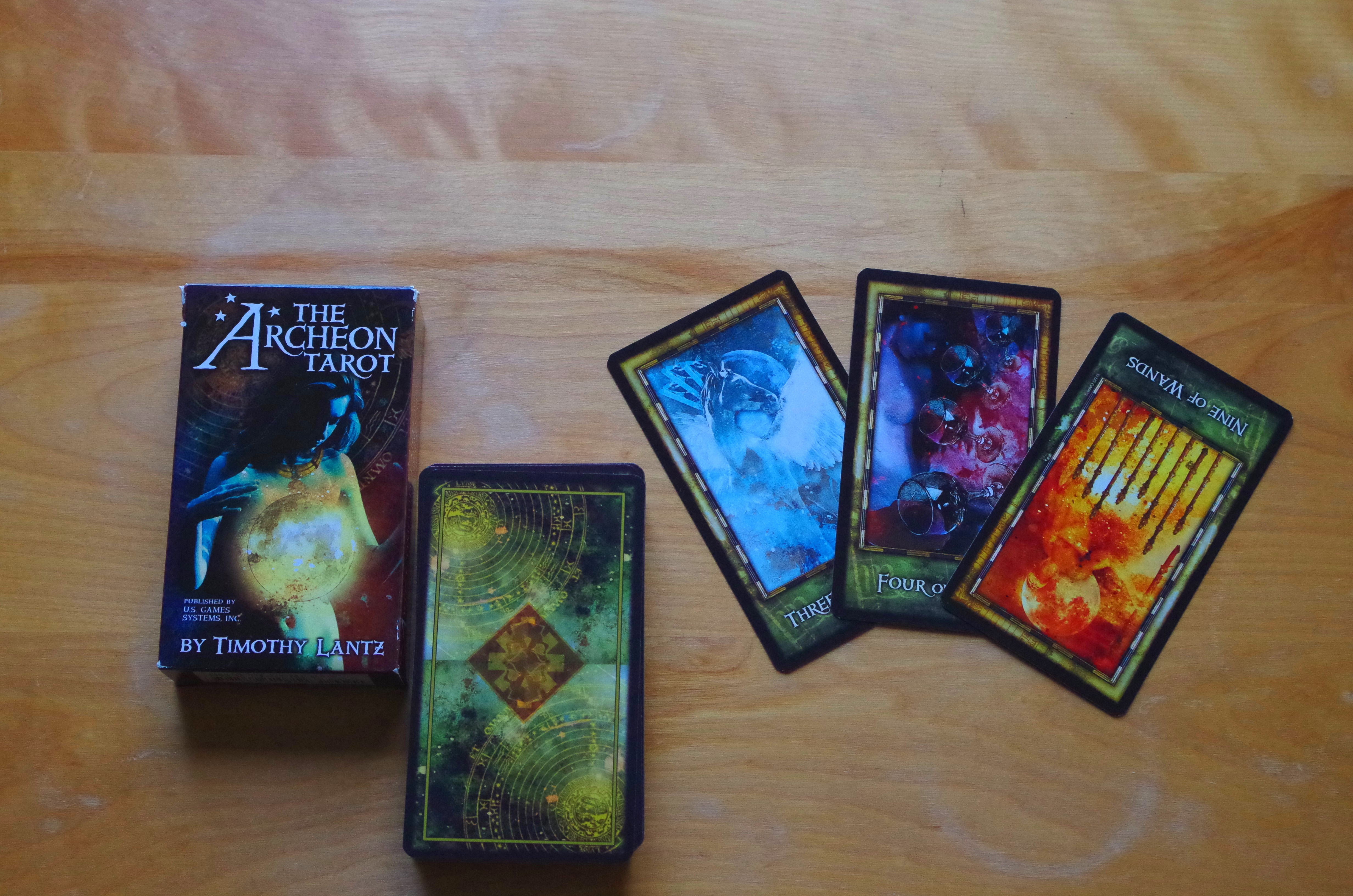I meant to blog about this right away, but first I was still processing and then Samhain season really hit. It’s still hitting, and I’ll blog about that, soon, but first, here are my impressions of Hallowed Homecoming.
Generally, I liked the event! The workshops were enlightening and inspiring, the rituals small but effective. The staff was amazingly helpful, the food was delicious and filling (and they are SO GOOD with allergies!), and there was enough tea to keep my cup always filled. The parkland was beautiful, and the cabins were spacious. The only bad thing, really, was the weather.
It was cold. Cold and wet, and the cabins didn’t keep out the chill – they barely kept out the drafts. I had a brand new coleman sleeping bag rated to 0°F, and that combined with wearing three layers and a hat to bed made me barely warm enough. The rest of the time, I was fighting numbness in my hands and feet, even with thermal layers beneath my clothes, my good new boots, and gloves. Part of that, of course, is due to my chronic illness: I have poor circulation and difficulty with temperature regulation. The tea helped, and the fire in the main hall helped even more, but with wet firewood making fires in workshop cabins a struggle, I often found myself too cold to be fully immersed.
Our first day opened with registration and unpacking, and then I opted to skip the first workshop (on crafting ancestor altarpieces) in favor of walking the land, as I did at Witches’ Sabbat this past May. I started with my traditional self-introduction with tobacco in the Anishinaabe language, and after that I went wandering in search of the local Courtly Fae.
I was guided down a trail, under a fallen tree, down a fork to the left, across a field, down a hill, counter-clockwise around a holly bush, over another fallen tree, and to a decaying stump covered in bright green moss. Like the small hill in Ontario, this natural landmark was an anchor to a Faery Court, and when I gave an offering (of a delightful elderflower and lemon soda), I perceived a beautiful hall, and in a throne on a dais, a young and exquisitely beautiful Queen. She hadn’t been expecting my visit, but was pleased enough to meet me and accept the offering. I called her Wood Violet, because the flowers were a repeating feature in the decoration of the room and her wardrobe, and her eyes were the same purple. Scott accompanied me on the physical journey, but did not join me in the Hollow Hill.
Byron Ballard was the keynote speaker for the weekend, and that evening we attended her first workshop: Practical Ancestor Work. She began with a line from Mary Oliver’s poem “Wild Geese”, which is also a favorite of mine. (If you don’t know it, I highly recommend reading it.) My notes are sporadic, because Byron was teaching to a mixed-level group, and I was already familiar with much of her material. I did not know, however, that there is a version of the Wild Hunt in Yorkshire called the Gabble Ratchet that is associated with migrating geese, and is said to collect the souls of the recently departed. Byron also emphasized that there are several different types of ancestors: 1) blood family ancestors, both recent and ancient, 2) adoptive family ancestors, including friends who have passed, 3) the Beloved Dead, who are people from history that you feel a special kinship with, and 4) the Mighty Dead, who are the cultural heros of groups one belongs to, be they ethnic cultures, religious cultures, trades or crafts, or subcultures. A lot of time, people seem to shy away from Ancestor Work because their most recent ancestors were abusive or intolerant of other faiths, but there’s a wide world of the Dead out there, and no rule that says you have to start with the grandmother who hated you. (Although Bryon did also say that sometimes, those toxic relatives get a better perspective once they cross over, and they realize what they’ve done and feel obligated to make things better. Not always, but you might try contacting them and seeing if they’ll help you out occasionally, if speaking to them isn’t likely to trigger too strong of a negative reaction.)
The Opening Ritual was mostly to introduce the Guardians for the weekend, and to establish sacred space. My friend Cora joined them this year, and I felt that we were in safe hands for the work we would do the rest of the weekend.
Cora also led the first workshop I attended on the second day, on Hedgewitchery. Despite some technical difficulties with the fire in the craft cabin (damp wood), she led a pretty lively discussion of traditional witchcraft, her family’s German-American folk magic, and her approaches to hedgecrossing. The last part of the workshop was a guided meditation to speak to an element, and I had a very insightful conversation with the goddess Dinand while standing in a river. I was very glad to finally attend this workshop, since I missed it the last time Cora taught it!
Byron’s workshop on Saturday was one I believe I’d seen before, called the Spirit-Haunted Landscape, but the stories and the way she teaches change every time, so I was happy to listen again. She talked a bit about human spirits and different kinds of ghosts, and then of land spirits – both the large spirits of place, and the smaller more fae beings associated with plant growth. The last group she talked about are what I would consider the Gentry, the more powerful among the fae, like Wood Violet, the White Lady, and my own Queen, Starflower. Her words were as much warning as instruction: do not do the work if you are not called to it, she said, because you will be happier and have a simpler life without Them. But she believes that, for those of us who are called, we need to heed it, we need to brave the danger, because They can help us heal the world, and we need all the help They can give, even if it means that some of us lose parts of ourselves. I found myself nodding along with much of what she said, and I wasn’t the only one – at the end, she asked a few of us whom she either already knew or could tell worked with the Gentry and she asked us to share a nugget of wisdom. Strangely (or perhaps not so strangely, considering the subject matter), I can no longer remember what I said.
After that was my own workshop, an intermediate-level introduction to the three Morrigna, specifically the Daughters of Ernmas. There were about a dozen attendees, and I think it was pretty well received, even though I came dangerously close to info-dumping during my section on the Morrigna’s appearances in lore. I’ll be sharing the journey prompt in my next Dark Moon Crow Calls blog.
Following my workshop it was dinner time, and then after dinner we were all turned out of the main hall long enough for the staff to set up for the main ritual. We gathered outside for the main ritual and processed in, finding seats in near-darkness and near-silence. After what I recognized as a fairly standard Wiccan ritual opening led by Rev. Tristan and Byron Ballard, we were led in a call-response honoring ancestors who had many different types of deaths. Then a yarn rope that had been woven during an earlier workshop was stretched into a circle around the room, with each participant holding onto it in their non-dominant hand. We were instructed to give a single word answer to describe wisdom we’d received from our ancestors, and then take the scissors from the ritual leaders and cut a piece of the rope. My word was “peacemaking”.
On Sunday, Byron opened her workshop by explaining that she’d gone off site last night and had been in contact with the wider world, and expected that most of us had not, as that area of the parkland is a cell signal dead zone. She painted the Pittsburg tragedy in broad brush strokes, and said some strong words about banding together and fighting bigotry and the importance of interfaith work, before giving us all a moment to process. I had already begun to feel that we shouldn’t stay all the way to the end of the day, because the cold and damp was beginning to get to me, but after the news I just wanted to get home to my baby. My baby, who at eight days old, was given a taste of sacramental wine while a rabbi spoke prayers in Hebrew over him. My little family may be pagan, but we’re Jewish, too. We still observe some of the traditions of our ancestors, even if our religious views differ.
Once most of us had regained our composure, she began her workshop proper, on the topic of Peasant Magic. She shared a paraphrasing from Jason Miller, who split magic into two broad categories: temple magic, and field magic. Peasant magic and folk magic, she explained, was field magic, where you do the work that needs to be done with whatever tools and materials you can scrounge up, be that a bit of lint from your pocket and your own saliva, or an herb you grow in your yard and your good wooden spoon. She talked a bit more about community, too, about being our own first responders and not relying on bureaucracy when its ways will take too long. Boom the creek yourselves to stop an oil spill from making it to the river. Set up networks, where you know who to turn to for each crisis, be it one of waterways, immigrants in crisis, or a house fire. No one can devote time to every worthy cause, she reminded us, to it’s best to pick 3, and devote as much time and effort as you can to those three, and trust that your neighbors will cover the rest. You can support them in solidarity when they need your help, and they will support you back, even if it’s something as simple as buying a box of candles for a vigil. Mundane actions and magical workings work best in unison, she said – one without the other isn’t as effective. But if you try a spell and it doesn’t work, and then you try it more carefully and harder and it doesn’t work, and then one more time while pulling out all the stops and invoking all your gods and it still doesn’t work, you need to stop. She calls it “1,2,3, Brick Wall”. After the third time, you’re being told that the work is not for you to do, and your need to accept that. She told a poignant story about the fires near her home a few years ago, to illustrate the point, and ended with the wisdom that what seems like a disaster may contain within it new growth; some seeds are only opened by fire. That resonated with me, especially considering the messages I’ve been getting from the Morrigna and the Eyes of Ra lately.
After the workshop we packed up to leave, and did not stay for the closing ritual. We said our goodbyes, and exchanged contact information with a few new friends. Some people asked if we’d come again, and I wanted to say yes, but I could already feel how much strength the weather had sapped from me, and the insight of the chronically ill told me I’d be spending days recovering. So I don’t know. I enjoyed the event. I’d love to see the space again; I’d like to return in the spring to see Wood Violet in her time of power. But I’m not sure if three days of damp and cold was wise. I may need to look into staying somewhere off site, somewhere warm and dry, but then the expense may be more than our budget can stretch to cover. We shall see.
